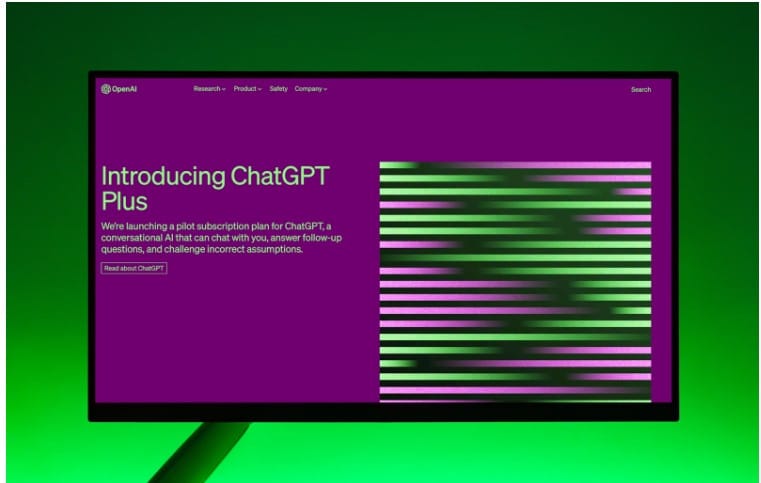Chatbots are swiftly becoming a customer service norm, on hand to help clientele instantly, at any time of the day. This is great for busy PR companies and departments who want to provide 24/7 support to their clients, but how do you get the best performance from your chatbot? Certainly not by setting it up, dusting your hands off, and calling it a day.
To realize the full capabilities of your chatbot and deliver A-grade customer service, you need to know how to assess its effectiveness. There are an assortment of metrics that can help you in this task and we’re going to cover the top 14.
Understanding chatbot analytics
Many elements go into making a high-performing chatbot, such as conversational flow optimization, data sharing, and continuous performance evaluation. However, it’s chatbot analytics that can guide you through the daunting world of conversational AI.
Analytics break down the finer details of every chatbot interaction, collating the information to deliver valuable insights into the standard of customer service being provided. You can scrutinize conversation length, human takeover rate, and the number of engaged conversations to learn the impact your chatbot is having.
In other words, huge data sets are involved in chatbot analytics, made possible by software frameworks like Hadoop clusters and distributed computing tools. If you’re currently wondering, what is Hadoop cluster? Don’t worry, we’re not going too technical here, all you need to know is it is a group of computers that work together to store and process big data using special software.
Basically, they’re making short work of a big job to give you rapid insights into chatbot performance.
With this knowledge, you can refine your model and keep improving its performance. The goal is to achieve the highest possible level of customer satisfaction. Chatbot analytics help you to understand what is playing well with your clientele and what is failing, so you can make the necessary changes to ensure every chatbot conversation has a positive outcome.

1. Average conversation length
Tracking how long chatbot conversations are taking, on average, gives you an idea of how smoothly interactions are going. If the conversations are relatively quick, that’s a good indication that the chatbot is handling queries efficiently.
Long conversations aren’t necessarily bad, depending on the nature of the interaction, but a significant increase in average conversation length may flag that there is something in the way your chatbot is communicating that could be improved.
2. Interaction rate
This refers to the number of messages that are exchanged within each chatbot conversation. Generally, if the interaction rate is high, it means that the chatbot is successfully managing to keep the conversation going and users are engaged.
Understanding the effectiveness of the chatbot user interface is crucial for optimizing engagement and satisfaction levels.
If, however, the interaction rate is low, you may want to look into fine-tuning the chatbot so its conversations flow better. Bear in mind that it should be a dynamic conversation, not a monologue.
3. Engaged conversations
A chatbot that can conduct human-like, successful conversations with customers is one of the best applications of artificial intelligence in PR. To track if your chatbot is having quality chatbot interactions, you need to look at your engaged conversation metrics.
Examine interactions that go beyond the first greeting and become meaningful. This means aspects like the complexity of the subject, how many interactions occurred, and whether a task was completed. This quantifies the quality and longevity of conversations so you can see the impact the chatbot is having on customer engagement.

4. Total number of conversations
Tallying the number of conversations between your chatbot and users gives you an idea of how in demand this communication option is. If the number is lower than you’d like, you can begin investigating why customers aren’t engaging with your chatbot.
If you can see the number is growing, you can make plans to handle increased traffic. Integrate your chatbot with your native cloud applications to allow for scalability and flexibility within the cloud infrastructure.
5. Missed messages
Every missed message is a potential missed opportunity. When you keep tabs on missed messages, you begin to see where your chatbot is underperforming. A miss could be the result of an unaddressed query or a misunderstood request, but understanding the cause will help you to fix the problem.
6. Total number of unique users
Whether users are logging in on phones, tablets, laptops, or virtual machines, you can track how many are unique. A thorough examination of the number of unique users engaging with your chatbot
A growing number is a sure sign your chatbot is getting more popular, both attracting and retaining users. The flip side of this is a stagnant or declining number of users, which should prompt an investigation into why your chatbot isn’t engaging customers the way it should.
7. Human takeover rate
The human takeover rate measures instances where users prefer switching from automated chatbot interactions to human assistance. This gives you x-ray vision into user expectations and helps strike a balance between automated and human support.
In some cases, human takeover is important and correct. For instance, if you have a rule based system AI chatbot that is designed to take payments, and it detects potential fraud, referring the customer for human takeover would be essential.

8. Goal completion rate
Is your chatbot achieving its defined goals? What these are depends on your business priorities. Perhaps you want your chatbot to boost lead generation, by successfully converting initial enquiries into qualified leads.
Or, you may need your chatbot to successfully guide a user through queries related to press releases or media outreach. A high completion rate tells you that your chatbot is working efficiently, but a flagging rate may signal the need to adjust the chatbot design or communication flow to address user needs.
Moreover, incorporating task management metrics into your analytics allows you to track the completion of specific tasks by the chatbot, whether it’s guiding users through a support ticket submission or facilitating appointment scheduling. Understanding the success rate of task completion provides valuable insights into the efficiency and effectiveness of your chatbot in handling various customer needs.
9. Customer satisfaction scores
Customer satisfaction scores, alongside monitoring online reviews, are two prime examples of the importance of artificial intelligence in reputation management. Introducing post-conversation surveys allows users to share honest feedback about their experience with the chatbot. This doesn’t have to be complicated, a simple number scale to rate their satisfaction will suffice.
After a conversation, consider sending a thank you email to users who have engaged with the chatbot, thanking them for their time and feedback.
Moreover, incorporating a customer feedback tool can provide deeper insights into user sentiment, allowing you to identify areas for improvement and continually upgrade the quality of service provided by your chatbot.
You can then regularly assess these scores to gauge user sentiment, allowing you to identify areas for improvement and continually upgrade the quality of service provided by your chatbot.
Moreover, leveraging ChatGPT for social media interactions can broaden your reach across various platforms. By harnessing its natural language processing capabilities, you can effectively tailor your responses, and engage with your audience in a more personalized manner, ultimately strengthening your brand’s presence and connection with customers on social media.
10. Frequent questions
Identifying frequently asked questions (FAQs) enables you to streamline your chatbot’s responses and elevate the user experience. These will likely include questions about pricing and onboarding, but consider other angles too.
For example, many people are concerned about sharing their information with chatbots and new companies, so you could include information about your NIST CSF framework and data security policies too.
By addressing common queries efficiently, you reduce user frustration and contribute to a positive interaction. Analyzing FAQs also aids in refining your chatbot’s knowledge base and improving its overall performance.

11. Average response time
Speed matters in the world of chatbots. If users have to wait too long to get a response from a chatbot, this can appear sluggish and unprofessional, impacting the image of your company. Monitoring the average response time keeps you in the loop on how quickly your chatbot addresses queries.
12. Retention rate
Next up is the retention rate, a metric that uncovers the percentage of users who return to engage with your chatbot over time. If they keep coming back, then you know you have sustained user interest and satisfaction, emphasizing the effectiveness of your chatbot automation.
By closely analyzing retention patterns, you can get a better understanding of user behavior, helping you to tailor your chatbot’s features and content to meet ever-changing expectations. This paves the way for long-term engagement and improves user perception of the chatbot.
13. New users
Monitoring the number of new users engaging with your chatbot will show you the success, or failure, of promotional efforts and user acquisition strategies, ones that are aimed at bringing in new customers or clients.
By understanding their preferences and optimizing the chatbot’s onboarding experience, you contribute to successful user conversion and nurture ongoing engagement. This approach ensures that your chatbot effectively caters to the needs and expectations of a growing user base.

14. Bounce rate
It’s always important to have an ear to the ground to understand what’s going on with your clients, which is why a social listening strategy is imperative. Likewise, when it comes to chatbots, you need to pay attention to your bounce rate.
Looking at the number of people navigating away, and what they say about your company online, will also help you to understand what may be causing them to disengage with the chatbot. This lays the groundwork for identifying pain points and amending the chatbot interface to get the bounce rate down.
Improve your customer service with chatbot metrics
There are many chatbot metrics to measure the customer service your AI is providing, but the most important thing to remember is that this is about iterative improvement. A chatbot should not be implemented and then left to its own devices.
These AI tools are capable of constantly learning, and refining their performance when you commit to monitoring these metrics closely and making the right adjustments. Chatbots are a permanent part of customer service and within the competitive PR sector, they will be an essential communication tool going forward.
To keep pace with customer expectations, PR professionals will need to employ chatbots effectively, using the abundance of metrics available to continuously improve the user experience. In this way, you can make sure to evolve alongside industry trends and client needs.








